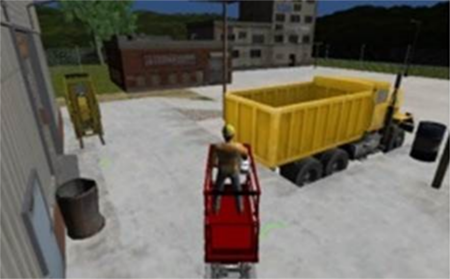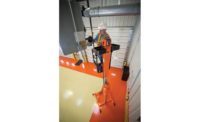 Last month, NIOSH and its partners asked construction workers and employers to take part in the second National Stand-Down to Prevent Falls in Construction. This event calls for work to pause so workers can focus on activities to prevent falls. The National Stand-Down to Prevent Falls in Construction happens once a year, but NIOSH works year-round to understand the causes of falls, and how to prevent them, in all industries that experience this serious risk.
Last month, NIOSH and its partners asked construction workers and employers to take part in the second National Stand-Down to Prevent Falls in Construction. This event calls for work to pause so workers can focus on activities to prevent falls. The National Stand-Down to Prevent Falls in Construction happens once a year, but NIOSH works year-round to understand the causes of falls, and how to prevent them, in all industries that experience this serious risk.
(The image is from the NIOSH Aerial Lift Hazard Recognition Simulator and shows a work environment scenario for users to navigate.)
Aerial lifts are a type of widely used equipment that increases the risk of falls if precautions are not followed. These powered, mobile platforms often replace stationary scaffolding to elevate workers to various heights. They can be found in many industries, including construction, warehousing, and general building maintenance. In addition to their mobility, aerial lifts require minimal setup time and can reach substantial heights. For these reasons, aerial lifts are growing increasingly popular in various industrial jobs, such as painting, tile and drywall installation, and maintenance. The problem is that some of the same attributes—mobility, high elevation—that make aerial lifts so useful can increase the risk of falls, especially with improper training and use, and failure to follow manufacturer recommendations.
To prevent falls, NIOSH studies data from workplace falls to identify common hazards that increase risk. In one study, NIOSH investigators examined data from three databases, including the Census of Fatal Occupational Injuries, NIOSH Fatality Assessment and Control Evaluation reports, and Occupational Safety and Health Administration (OSHA) Incident Investigation Records. After analyzing the records, they found that most falls, collapses, and tip-overs related to aerial lifts occurred when the lifts were extended from 10- to 29-feet high. Constructing and repairing activities were most commonly associated with falls, collapses, and tip-overs.
Based on this analysis and other studies, NIOSH recently developed an Aerial Lift Hazard Recognition Simulator that provides a simulated real-world workplace, complete with hazards such as potholes and overhead structures. For those of us who remember driver’s education, the simulator may seem like an advanced, high-tech descendant of the driving simulators that schools used years ago. The NIOSH simulator provides employers and workers with a valuable and realistic operator experience—all from the safety of a computer—to raise awareness of the potential hazards when using aerial lifts.
NIOSH investigators have also used computer modeling and physical experiments to test the responses of an aerial lift under different conditions, and under limits recommended by the American National Standards Institute and major aerial lift manufacturers. These tests allow investigators to identify how the lift and operators would respond to different environmental and physical impacts, including adverse operating conditions. Videos and information from the computer modeling are available on the NIOSH website.
More information is available:
Fall Injuries Prevention in the Workplace
Fall Injuries Prevention in the Workplace: Aerial Lifts
Fall Injuries Prevention in the Workplace: Aerial Lifts—Test Videos


